We’re looking into where our water comes from, and how modern technology could help us better conserve the precious resources we have to be more prepared for future dry periods.
In this episode
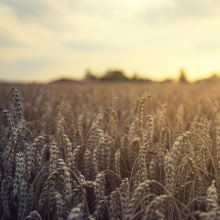
01:04 - How has the drought affected UK farmers?
How has the drought affected UK farmers?
Adrian Temple
The summer of 2022 has been one of a countrywide drought; July was the driest in over 20 years, and now 10 of the Environment Agency’s 14 regional divisions are in drought, and only Cumbria and Lancashire are considered at ‘normal water resource status’. Everyone’s affected; lawns and playing fields are brown; trees are dead; hosepipes are banned, and for some it’s been economically painful too…
Adrian- I'm Adrian Temple and we've been farming for three generations in the east of England and we have very dry soil at the moment. We should be seeing beans at this time of the year, three foot high, ready for harvest. We've now got plants at half that size and very few pods. The whole of the field looks quite sparse and I've heard neighbours say that even with reasonably looking crops, they haven't yielded very well this year.
Chris- If I stepped into this field and I didn't know what should be here, I would assume you just had left this field fallow. There's bare soil everywhere with huge cracks and what plants there are here look very scrubby and half dead. and there are very few pods on them.
Adrian- No, that's absolutely correct. Yeah. And we're just gonna take what we can and that will be it really for the year. The only upside is that beans being leguminous have put some nitrogen back in the soil which, at the extortionate price it is at the moment, is probably not a bad thing. But that wasn't the aim, the aim was to have a decent crop. So yeah, it's been a struggle this year.
Chris - Is it literally hanging in the balance whether this is even worth harvesting?
Adrian - Yeah. It's worth putting the combine over it, but only really to get what we can and clear it for next year
Chris - Break even?
Adrian - If we're lucky, yeah. It's gonna be very marginal because of the cost of seed and cultivation. And I very much doubt if we get our money back on that. So yeah.
Chris - Seen it like this before?
Adrian - No, not quite as bad as this.
Chris - And I suppose there's a double whammy because that ground is like concrete and trying to pull any kind of implement through that immediately. Your costs are going to burn a lot more fuel and you're going to burn your tires out faster.
Adrian - Absolutely. And also you're wearing parts, this soil as hard as it is. Yeah. As you say, it's gonna be more expensive.
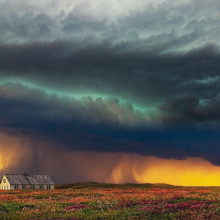
03:52 - How climate change affects the earth's rain
How climate change affects the earth's rain
Dr Michael Mann, University of Pennsylvania
Michael Mann is from the University of Pennsylvania and author of ‘The New Climate War’. He told me what shifting patterns in rainfall will do to water availability in the UK and worldwide…
Michael - In a place like the UK, much of the water comes in the form of precipitation and streamflow, rivers and streams, that provide some persistence to the water resources that are available. In a large number of regions around the world, I believe it's as much as 25% of the world's population gets its drinking water primarily from glacial melt. And so this is one of the concerns as we lose glaciers around the world, we're losing that important source of water. And that's true certainly for parts of Europe, but for the UK again, much of that water comes from the basic hydrologic cycle where you've got the ocean, the Atlantic ocean to your west, and moisture evaporates off the ocean and then precipitates falls in the form of liquid water or in the winter. You get a little bit of that in London and much more in the Northern parts of the UK in the form of snow
Julia - With this rain water, how do we capture it so we can then drink it?
Michael - So there are various ways of storing water. Glaciers are a very important natural water storage device, but there's groundwater as well - aquifers. One of the problems is that these are not necessarily renewable water resources, at least on sort of the time scales of importance to us. So as we continue to tap these aquifers, we're depleting this longer term source, and eventually that will run out. So there's always a bit of a problem when we run into a deficit, when we're losing more water through evaporation, especially in the summer, then we're gaining in the form of precipitation primarily in winter. If that balance goes negative and we have to rely on tapping into aquifers for example, groundwater for example, then that poses a long term exposure to a very large population.
Julia - So we're seeing right now the impacts of climate change really on our water supply. And, you know, as the saying goes, it's hard to predict the weather. But with rainfall, do you know if we look ahead to the future, how that is going to change because of climate change and the trajectory that we're currently on.
Michael - Yeah. So we see more extremes at both ends of the scale, worst droughts and, and worse flooding events. And certainly we've seen that in the UK. We've seen that in Europe, we've seen that here in the United States. So that's one of the attributes of climate change, but then there are also the longer term average shifts. And we do actually expect to see more rainfall in the winter in parts of Europe and substantial parts of Europe because essentially, the atmosphere's warmer. When you get those winter storms, they're gonna produce more rainfall or in some cases snowfall. So over a large part of Europe and certainly Northern Europe, we expect to see increased winter rainfall. But here's the rub - we expect to see even larger losses of water through evaporation in the summer. And so, while we might see an overall increase in precipitation, especially in winter, that may be outpaced by an increase in water loss through evaporation. And so you get worse drought, even though you might expect to see higher rainfall amounts in the winters,
Julia - Is there a way then that we can take advantage of the higher rainfall that we potentially have in the winter by storing more rain water? Are there ways that we can capture more of this rain water when we're having it, and we're having a lot of it. So then in the summer, when the drought comes around, we're a bit more prepared.
Michael - There's a lot that we can do in the way of adaptation. That is to say we change our way of doing things. We're more efficient in our use of water. We store the water when there's excess water. Lots of things that we can do to try to limit our exposure to the impacts of climate change and so adaptation is really important. But if we allow climate change to proceed, if we allow the planet to continue to warm up and these effects to continue to get worse, we may soon exceed our capacity to adapt to these changes. And that's particularly true when it comes to perhaps the most vital resource that we rely upon as human beings - water resources,
Julia - 10, 20 years down the line, water's gonna be as precious as gold. If we keep going the way we're going, we're just not gonna have water on tap - pardon the pun - like we do now.
Michael - That's right. And we can see historical analogs for that, warnings from history. Much of the strife in the middle east, in the near east, ultimately has been driven by a long term shift in the climate towards drier conditions. In Syria, the Syrian uprising, the Syrian spring was driven in fact by a large part of migration of rural farmers, who could no longer make a go of subsistence farming because of what was, and continues to be, the worst drought in more than 900 years at least. And so this is really a warning to us that the battle for water resources will quickly lead to political and societal instability. If we, again, don't mitigate by reducing carbon emissions and stopping the continuation of the warming and put in place adaptive measures to deal with those changes that are now baked in, that we can no longer avoid.
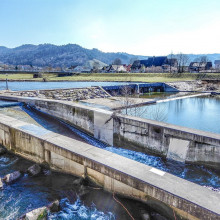
10:23 - How can we better store our water supply?
How can we better store our water supply?
Jan Hofman, University of Bath
With more extreme weather predicted to happen more often owing to climate change, what can we do to be better prepared for dry summers? Perhaps the most simple strategy is to collect and store more of the water that falls in winter, and find better ways to use our so-called “grey” waste water which, at the moment, goes straight down the drain. This is the concept known as “circular water storage” and some countries are already well ahead on the curve. Jan Hofman is at the University of Bath where he looks at the circular water economy across Europe.
Jan - Yeah, a circle economy in practical terms means that you are actually storing water and reusing it. And as you say, there are countries in Europe where this is already common practice or done in a structural way. For instance, in Flanders, new homes have to install rainwater tanks with a volume of 5,000 liters, which can be used for toilet flushing, washing machines, and watering the garden. But we're also working on a large European project where we are running demonstration projects at full scale. In the Netherlands, in Germany, in Sweden, but also in Spain and Greece, where we can really demonstrate these circular water technologies in practice.
Chris - I suppose one of the big challenges though, is that new builds are all very well. And it's important that something is happening, but that's not where most of the housing stock is, is it? Most of the housing stock already exists. And so it's really a question of what we can do to retrofit this for millions of people, millions of consumers, all with a big water footprint, rather than just worry about the few million new houses we're building every year.
Jan - Yes, indeed. When you build a new house, you can make use of the technologies and just build them in there. But if you have the existing housing stock, you have to do different measures. Nevertheless, you can do things, we all know that there is quite an old sewer system in the UK and when you renew sewer systems, you can create a separated sewer system for file water and rainwater. And if you connect or disconnect the roofs from houses, from the file sewer to a new rainwater sewer, you can actually collect rainwater again and reuse it in the houses.
Chris - Is it then that the plan that basically you just collect water en masse like that, or is it envisioned that people would do more kind of micro collection, their own house, a slightly bigger version of a water butt in the sense that you could, you could get your bath water and your shower water, and use it to water the garden? Or is it a more communal thing?
Jan - You can do both? As I said in Flanders it's an individual system with the 5,000 liter tank, a big rain barrel so to say. But I think for larger situations, I think the communal or collective systems are much more in favor because it's easier to maintain, it's better to keep the water quality good, and it's better regulated if you do it in a communal way.
Chris - If you are thinking of retrofitting, and that has to ultimately be part of the equation, doesn't it? Because of the huge demand that we've got in existing housing stock in terms of their water consumption, is that economical, is that feasible? And what sort of price tag are we looking at to try and get people with existing housing stock on this grid?
Jan - Yeah, I think it depends on how you look at things. Of course, if you just look at investing in the technology at your home, it will cost you money. In contrast with, for instance, solar cells, they earn you money in the end, but here you have to invest in technology and you have a double system, which costs money. But on the other hand, there are also societal benefits. You were speaking on the show about combined sewer overflows. If you can collect rain water then you can prevent sewers from overflowing because the water is taken out of the sewer before the overflow occurs. It also can prevent damage from flooding damage of property and things around. So there are more benefits for society. And if you compare that with the costs in the broader context, then it also might be reasonable to give subsidies for these rainwater collection systems. And in that case, you create an incentive for investing in it.
Chris - Why is it not happening more already? That's the big question though, because some countries are very good at this and they're countries that have faced water stress or acute water shortages in the past. Australia is well ahead of the curve on this, but then they've had to be, whereas here, you know, is it just because in a country like the UK, historically, we've been so blessed with this beautiful weather and plenty of water that we haven't had to worry about it? And now with the effects of climate change and these departures from what we've regarded as normal, it's focusing people's minds.
Jan - Yes, indeed. I think if you look at doing innovation in the water sector, it's a slow process. And if you see how quickly, in recent years, changes in climate are happening, we are actually a bit surprised by all these things. And yeah, it takes time to adapt. And the change in the climate is going more rapidly than the pace of adaptation and I think that's where we have to accelerate.
Chris - And just thinking about the home situation to finish here in the UK, I'm tearing my hair out because I'm watching new properties going up. And then, the bill to put solar into them is pushed onto the homeowner. If they decide they want it, why are we not doing something whereby new developers are told you must put renewable sources of energy onto all your houses and the architects design them in so they're aesthetic and you must also include a water solution. Why is that not happening?
Jan - Yeah, that's a good question. I think it's a matter of time. It's also a matter of having a very open market economy, and market mechanism. I think going into a situation where you can incentivize through minimum requirements for new build homes would be a way forward. I think, as you said, you can use subsidies to enforce things or to stimulate things, but also put regulations in place for minimum requirements. But it takes courage. It takes political courage to do that. And yeah, I think maybe the pressure needs to be even more higher than it is now, even more higher than we have now to go that way.
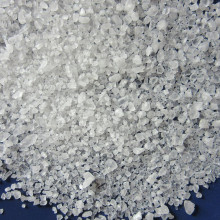
18:09 - Could desalination be used in the UK?
Could desalination be used in the UK?
Christopher Sansom, University of Derby
Desalination is the process of removing salt from seawater. Chris Sansom, is a Solar specialist at the University of Derby…
Chris Sansom - There are two principle ways in which we can use solar energy to desalinate sea water. The first is called CSP and the second is called RO. CSP stands for concentrating solar power and that's where we use the heat of the sun in hot and sunny parts of the world to basically evaporate sea water, which we can then distill again to produce pure H2O. So, in CSP, in concentrating solar power, you need a very hot, sunny environment. So typically around the tropics of the world, in the deserts of the world, where we use the heat of the sun. Not electrical power now, but the heat of the sun focused using very large mirrors to evaporate sea water. What we're doing there of course is we're just speeding up nature because seawater evaporates naturally in nature and falls again, as rain on the land and in rivers. So we are speeding that process up using CSP. The other way in which we can use solar energy, the power of the sun to desalinate sea water, is by using solar PV for example to produce electrical energy to power what we call the RO process, the reverse osmosis process. Now that's a very different process for evaporating seawater because that forces seawater through very fine membranes, a bit like forcing seawater through filter paper, that we all remember from school. You have to force it through the membrane. It's a very high pressure process, and requires a lot of electrical power to run the pumps that do that. But that is a perfectly feasible way of producing desalinated water using solar energy.
Chris Smith - But what's the energy footprint of doing this and how much water can you make this way?
Chris Sansom - If we consider the CSP first, then it's just one of those horrible facts of life that it requires a lot of energy to evaporate water. If you imagine boiling the kettle, then you can boil a kettle which may be one or two kilowatts. Boiling a kettle may be four minutes, five minutes or something like that. But you're actually talking here about boiling that kettle dry and that does take a lot of energy. That would take you about 20 minutes and would take you about one to two kilowatt hours in energy. So that is a lot of energy. In the RO process, It's a slightly different problem, but you will then be using a large amount of electrical energy in order to power those huge pumps to produce enough water to make it feasible. In the RO process, I think you could produce, for your kilowatt hour If I do a similar example to the CSP, for your kilowatt hour you will probably produce 200 liters of water rather than two liters of water. So maybe a hundred times more in the RO process. So it's feasible to use the RO process to desalinate water, but it's still a lot of energy to produce drinking water.
Chris Smith - And is the water arising from both processes equivalent and adequate as a drinking water source or is one better than the other?
Chris Sansom - They're certainly equivalent in the sense that they are both very close to pure H2O. As to drinking pure H2O, there are a number of opinions on this, as to whether this is a good idea or not. My own personal view is that you can drink small amounts of pure H2O but not n great quantities. Our bodies are not really adapted for pure H2O, we prefer minerals in our water. We've evolved that way and our cells require that.
Chris Smith - A dash of mineral water goes a long way, doesn't it? I suppose what we should talk about is what we do with the waste, because there are always, as we keep saying on this program, trade offs, and there are consequences. And what comes back from a desalination process is gonna be some very, very salty water you've got to get rid of, or a whole heap of salt that you've got to get rid of presumably
Chris Sansom - Yes, that is the biggest drawback and there is no simple solution to that. There are things that you can do with salt. You can use salt, it could be table salt. You can use salt as a preservative. You can use it in various industrial chemical processes, part of the chemical reactions. It also makes a very good thermal store. Molten salts make a very good storage medium for high temperature storage, thermal storage. But I have to say that in the large desalination plants that you find in the middle east, for example, you will notice around the plants, a lot of salt is just put on the land. What we can't do now is put it back into the oceans. It can't go back into the sea. Everybody agrees that but you will see salt just lying on the ground and just sitting there and buried in some cases.
Chris Smith - Yeah, I think there were some catastrophic stories of this extremely hypersaline solution going back into the ocean and it was poisoning the sea floor, because it was basically sticking to the seafloor because it was so heavy.
Chris Sansom - You're absolutely right and that was done in the early days of desalination and think as desalination has expanded in terms of volumes, we've realized that we cannot do that anymore. Yes, it is an environmental disaster, which is what we're trying to avoid.
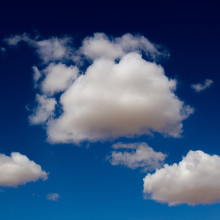
24:33 - Could cloud seeding be used in the UK?
Could cloud seeding be used in the UK?
Maarten Ambaum, University of Reading
The process of artificially drawing rain from out of clouds is called cloud seeding, and has been prominent in the news, as the Chinese government announced an aggressive programme of artificial rainmaking to try to save their harvests after the country’s driest summer since records began in 1961. They do have form in this area, having fixed the weather for the Beijing Olympics back in 2008, but not on the scale they’re proposing now. Maarten Ambaum, from the University of Reading, has been speaking to Will Tingle, about how cloud seeding works, and if it could be feasibly used in the UK.
Maarten - Rainfall enhancement works by injecting salts, typically, into clouds. And what these salts do is they make ice crystals form. They act like cloud colonization nuclei, and those ice crystals. When they form, they can grow quite rapidly in the cloud. And the idea is then that those ice crystals might fall as precipitation. So these cloud seeding processes they have several purposes, so it's not just increasing rainfall or increasing snow, but people also try and use it to reduce damage by hail, so hail suppression. Of course, hail damage is a high economic costs so there's a lot riding on it if you could actually prevent hail from falling. So that's another typical application of of cloud seeding. It should be said that it's not very clear how efficient cloud seeding is. It's very hard to measure effects of cloud seeding. There's a lot of variability in nature, in the amount of precipitation that you might get out of any cloud, there's no typical cloud, all clouds are very different. They're very turbulent, they're very transient. And so it's very hard to measure in such systems whether any intervention will have an effect
Will - Which countries are currently using cloud seeding the most?
Maarten - Well currently I think most of the activity around cloud seeding is currently in the middle east, where there is a sustained effort by state actors to fund cloud seeding operations. So I'm involved with a big rainfall enhancement research program, which is funded by the United Arab Emirates. And so one of the things that our team at the university of Reading contributes to that research program is to examine to what extent, instead of using typical cloud seeding salts, you could use electric charge to make to make cloud droplets coagulate into bigger drops and produce rain that in that way. So instead of injecting salts, you really would be injecting electric charge. And our research program is seeing whether electric charge can help improve the efficiency of cloud seeding operations.
Will - So these salts that are involved in the rainfall enhancement process, are they in any way harmful to the environment?
Maarten - So the salts that are typically used are- dry ice, frozen CO2, silver iodide and normal table salt. And all of these substances have no environmental or health hazard that we are aware of at all. And at the same time the amount of salts that are being seeded into clouds during any operations is so small that, that it, it would have very little impact anyway but the soils themselves are not considered harmful at all.
Will - Cloud seeding is becoming more prominent in the public eye. Do you think that cloud seeding, as we know it right now, could ever exist at a scale so large that one country's cloud seeding could potentially steal water from any of its neighboring countries?
Maarten - So on a smaller scale, it's possible to steal water, if you want to call it like that, from rain falling on a farm next door, which doesn't fall on your farm. So at that level, it is conceivable to think of stealing water that is only an issue. If you really can target your cloud seed such that it will rain over one farm, but not the next farm. And that is actually in practice, not really the current state of affairs. Now on a larger scale like between countries, that's an irrelevance. It is not the case that if you make it rain over the United Arab Emirates, that that rain cannot fall over Saudi Arabia anymore, removing a cloud or several clouds via precipitation doesn't remove clouds from another area because clouds are transient, they reform and they remove themselves, et cetera. So on a larger scale, it's an irrelevance really to suggest things that one country can steal water from another country.
Will - And why would you say that cloud seeding isn't particularly feasible for the UK?
Maarten - As the word says, cloud seeding is a matter of there's a cloud and what you're trying to achieve with cloud seeding is to make the small cloud drops to change that into precipitation. So what needs to happen is you need to come up with some process that makes the small cloud drops into bigger cloud drops. However, in the United Kingdom, when there is drought, that is not due to the fact that there are clouds there that don't rain. When there's droughts in the United Kingdom, that's typically due to the fact that there are no clouds around. The weather systems tend to sort of evade the United Kingdom, they follow the jet stream typically. And the jet stream during drought periods is usually displaced. So those weather systems and the clouds that come with them don't come over the United Kingdom and when there is no clouds to seed, cloud seeding is nothing, it can achieve nothing. You can't seed clear air to produce rain.
Related Content
- Previous COVID Vaccines and Coffee Cups in Hot Water
- Next Apollo Remastered










Comments
Add a comment